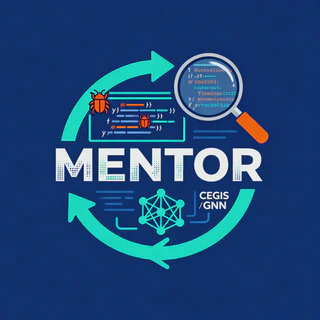Automated Feedback for Introductory Programming Exercises

Delivering valuable and personalised feedback to students remains one of the greatest challenges in programming education, particularly in courses with large enrollments.
Providing individualised guidance for every student submission is often infeasible, motivating the development of automated, intelligent tutoring systems capable of analysing and repairing student code.
🧩 The MENTOR Framework
In this project, we have been developing MENTOR, a semantic Automated Program Repair (APR) framework designed to provide automated feedback for introductory programming exercises.
MENTOR validates repairs through execution on a test suite and returns either a repaired program or a highlighted version of the student’s code pinpointing the faulty statements.

As shown in the figure above, MENTOR receives as input an incorrect student submission, a test suite, and a set of N correct submissions for the same IPA.
The framework is composed of five main modules:
- Program Clustering
- Variable Aligner
- Fault Localisation
- Program Fixer
- Decider
🧠 How It Works
Program Clustering:
MENTOR begins by clustering correct submissions using InvAASTCluster, which leverages both invariants and Abstract Syntax Trees (ASTs) to identify structural and semantic similarities across programs.Variable Alignment:
Using Graph Neural Networks (GNNs), MENTOR performs variable mapping between each cluster’s representative program and the incorrect submission.
Accurate variable mapping is a crucial step for tasks such as program equivalence, code analysis, and automated repair.Fault Localisation:
For localising faulty statements, MENTOR employs CFaults, a MaxSAT-based formula-driven fault localisation tool capable of handling multiple faults simultaneously.
CFaults applies Model-Based Diagnosis (MBD) principles to consolidate all failing test cases into a unified MaxSAT formulation, ensuring consistent and minimal diagnoses.Program Fixing:
The program fixer module integrates the information gathered so far — cluster representatives, variable mappings, and localised faults — into structured prompts for Large Language Models (LLMs).
Guided by Counterexample-Guided Inductive Synthesis (CEGIS), MENTOR iteratively refines candidate repairs by evaluating each synthesis result against the test suite.Decision and Feedback:
The Decider Module verifies whether the candidate repair passes all test cases.- If successful, MENTOR returns the repaired program or highlights the corrected statements.
- If unsuccessful, a counterexample is provided to guide the next synthesis iteration.
📊 Experimental Results
Experimental results on C-Pack-IPAs, a benchmark of introductory programming assignments, demonstrate that MENTOR’s hybrid repair approach, integrating formal methods with LLM-based synthesis, significantly enhances repair success rates while producing smaller and more precise fixes.
MENTOR outperforms several state-of-the-art tools:
- Verifix: 6.3% repair rate
- Clara: 34.6% repair rate
- MENTOR: 37.3%–64.4%, depending on the LLM configuration and prompt strategy
Moreover, unlike purely symbolic tools requiring identical control-flow graphs (CFGs), MENTOR’s LLM-driven synthesis enables flexible repairs even when structural alignment is not preserved.
🎯 Educational Impact

As illustrated above, MENTOR aims to support both students and lecturers by providing automated, personalised feedback in introductory programming assignments.
For lecturers:
MENTOR simplifies evaluation and allows courses to scale to larger cohorts without sacrificing feedback quality.For students:
MENTOR enhances self-learning by providing targeted feedback on syntactic and semantic errors, enabling faster comprehension and correction.
Through the integration of formal reasoning and neural synthesis, MENTOR bridges the gap between AI-driven feedback and pedagogical effectiveness, paving the way for next-generation intelligent tutoring systems in computer science education.
References
- (2025). MENTOR: Automated Feedback for Introductory Programming Exercises. PhD Thesis.
- (2022). MultIPAs: Applying Program Transformations to Introductory Programming Assignments for Data Augmentation. In ESEC/FSE 2022.
- (2022). Project Proposal: Learning Variable Mappings to Repair Programs. In AITP 2022.
I am always excited to explore new ideas together! Feel free to reach out 📧 if you are interested in collaborating on these research topics.